Jeff Bezos, the CEO of Amazon, has stated on many occasions that it is always ‘Day 1’ at Amazon. In one of the AMAs, when someone asked him what ‘Day 2’ looks like, or why not a ‘Day 2’, he stated, “Day 2 is stasis—followed by irrelevance—followed by excruciating, painful decline. Followed by death. And that is why it is always Day 1.”
This kind of decline happens over a period and not immediately, especially in big companies where it would be challenging to retain the vitality and power of the Day 1 philosophy.
Many companies, to this day, struggle to maintain the momentum of their Day 1 ethics. As they grow, the process creates dogma that pulls the company down with it. But, in a world that is not the same every day, every business needs the Day 1 mentality to survive.
Many companies have recently shifted to the Product-led Growth model (PLG) to balance the process and the product. Can PLG help keep the Day 1 philosophy?
But first, what is the PLG model?
Openview Partners coined the term PLG to define how a company builds its acquisition, expansion, and retention strategies around the product. The product lies at the crux of this model. It works on the principle that, as people start seeing value from the product, they start using it in their day-to-day activities. In this way, the more people start using the product, it becomes an integral part of the business.
Is the PLG model worth the craze?
Many factors come to play a role in the success of a PLG model. However, this model is popular for two reasons.
- The product-led model is better as the traditional approach wastes a good deal of effort without closing the deal in many instances.
- Product-led growth minimizes human labor. The customer landscape has seen massive changes in the past few years alone. People want to make their own decisions at their own time and only seem to want a salesperson if it is essential.
The answer to scalability lies in the Flywheel model
One of the first and famous flywheel model applications was seen in Amazon when Bezos discovered the flywheel concept after reading Jim Collins’ ‘Turning the Flywheel.’ He decided to apply the model at Amazon to craft a system for the continuous improvement of their customer experience. All the moving elements of a flywheel model depend on the customer experience and help one element flow into the other.
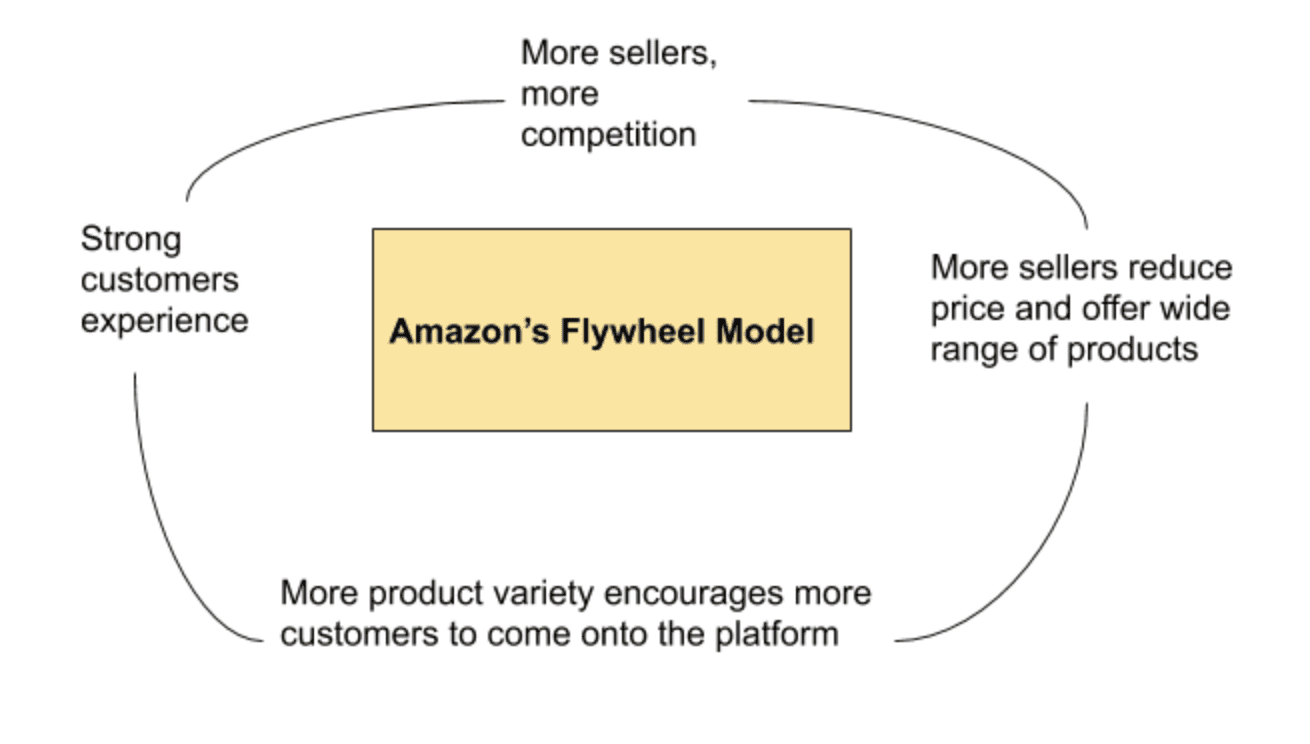
In the SaaS landscape, in 2018, Hubspot shook the world by announcing that they were ditching their funnel for a flywheel model. Brian Halligan, Hubspot’s CEO’s decision initially faced many grumpy faces considering they had a whole team called the ‘Funnel team.’ However, going back to their roots, they saw that Hubspot’s sole purpose was to enable businesses to perform better. For this, Hubspot needed to answer the changing demands of the market repeatedly.
Hubspot noticed that people do their research in today’s world, and outbound activities at times interrupted their purchase. Immediately they knew there should be a better model to grow the business, which revolves around engaging the audience without disturbing them.
A flywheel model concentrates on user satisfaction and aims to improve acquisition by advocacy. Contrary to the funnel’s linear approach, a flywheel model has a circular process that helps customers feed growth. It allows customers to grow better by aligning the company’s success with its customers.
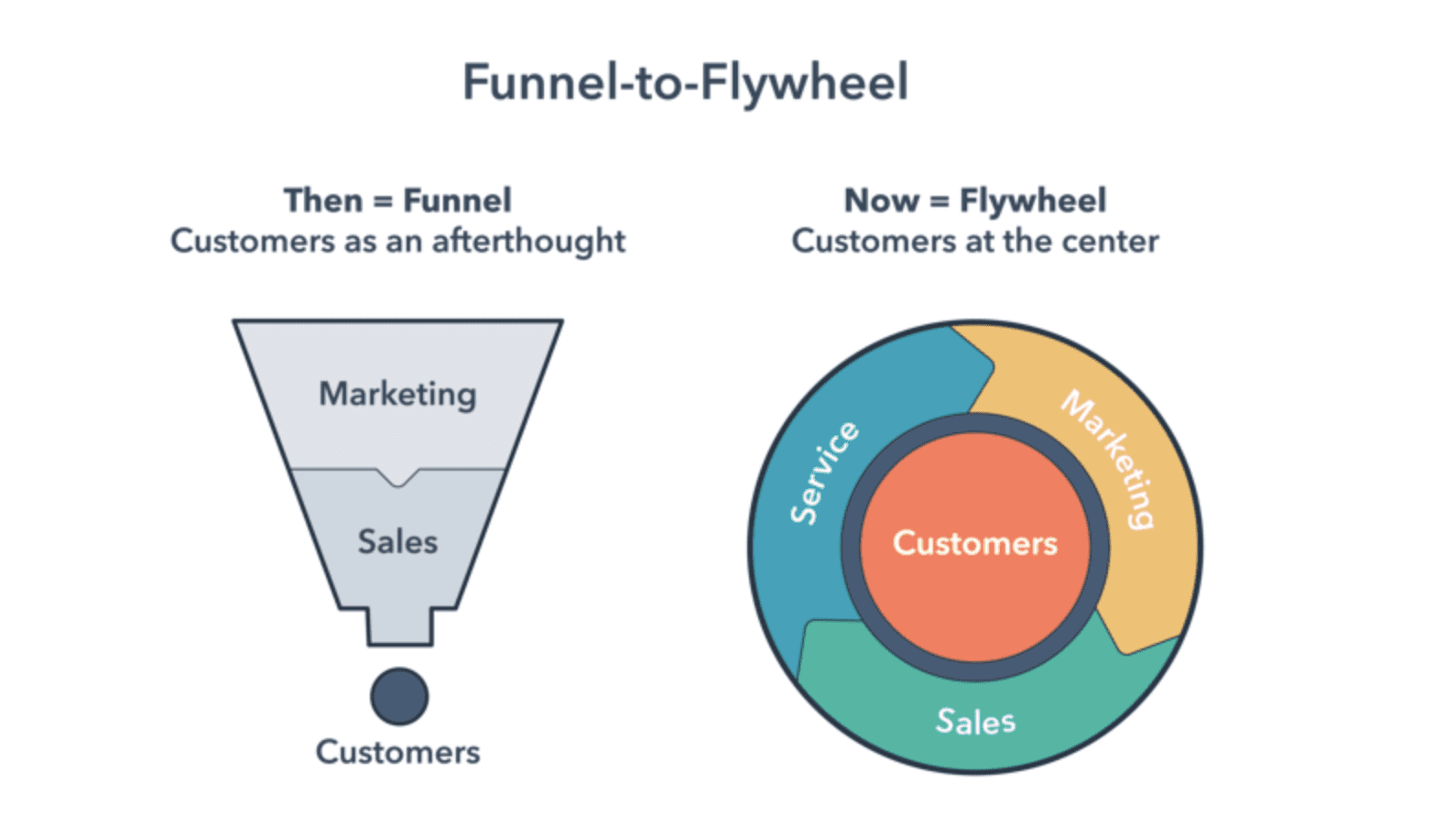
You cannot adopt a flywheel model overnight because it requires making different decisions to revamp the business strategy to flow in a loop rather than in a funnel. Even then, the approach to these changes would vary from business to business as every business’s customers and their needs are different.
After retiring their funnel in 2018, Hubspot listened and learned how their customers used this new growth model. To become flywheel friendly, they unleashed integrations that helped customers do more with Hubspot, invested more in customer marketing, customer advocacy, and creating delightful onboarding experiences for their new customers. They also targeted friction points with free software, providing the customers with more knowledge and a sales process tuned for the prospects.
Understanding the flywheel model is quintessential for understanding user experience, driving alignment between teams, and becoming a truly product-led company. This model is critical because the PLG metrics are implemented through the flywheel model’s lens.
How to use a Flywheel as a growth tool
Atlassian raised its first venture round of $60M in 2010 after being in business for eight years and growing to $59M in revenue. The company lauds that it has grown with only inbound activities. Atlassian’s mid-market and enterprise sales teams, which exclusively focus on up-selling and cross-selling, knew how to tap into the exclusive pool created by the company’s marketing engine. The good news is that Atlassian’s success can be replicated by other companies too.
Under a flywheel model, the entire growth of the company depends on creating momentum and energy. To enable a flywheel success, you need to take care of 3 factors.
- Force: For the flywheel to spin, you need to apply pressure on all the elements that make up the flywheel, such as sales, marketing, and services that would have a significant impact on the business. The key is to find the business’s ultimate objective and deploy strategies that would act as a force to push the flywheel towards attaining these objectives.
- Friction: Friction in the flywheel slows down the speed of rotation. Long sales processes, wrong messaging on the website, slow loading speed, etc., are some of the causes of friction. Identify friction as it arises and work towards providing an optimal solution in the given situation. Eventually, the friction points will smooth out.
- Build momentum: Once force is applied and friction points removed, the only other thing to do would be to focus on the customers. When this is done right, it increases customer loyalty and adds to the momentum of the flywheel.
The best thing about flywheels is that they can easily connect like gears in a vehicle. Product-led growth says, “Your marketing team may have a more granular, marketing-specific flywheel that feeds into the product-led growth flywheel somewhere around the evaluator stage. And sales may have a flywheel that connects with activation.”
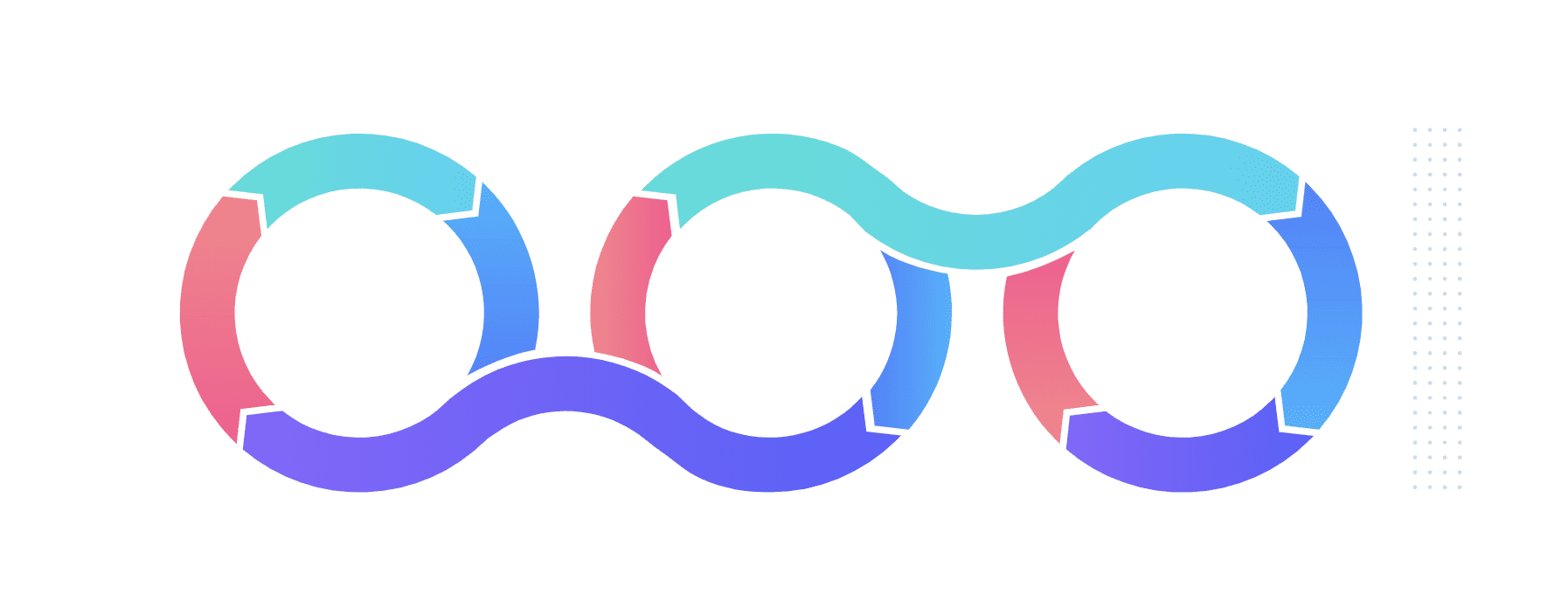
Understanding Pirate metrics as a way to adopt Product-led growth
Back in 2007, David McClure came up with pirate metrics or AARRR metrics. McClure’s model makes people see beyond vanity metrics. Each metrics, acquisition, activation, retention, referral, and revenue, is tied to different stages in the user journey, making it more relevant for product-led growth models.
Since most of the companies in the SaaS B2B space have a free-to-paid revenue model, monetization happens much earlier in the journey, and the order of the pirate metrics changes a bit. The explanation below is based on this model.
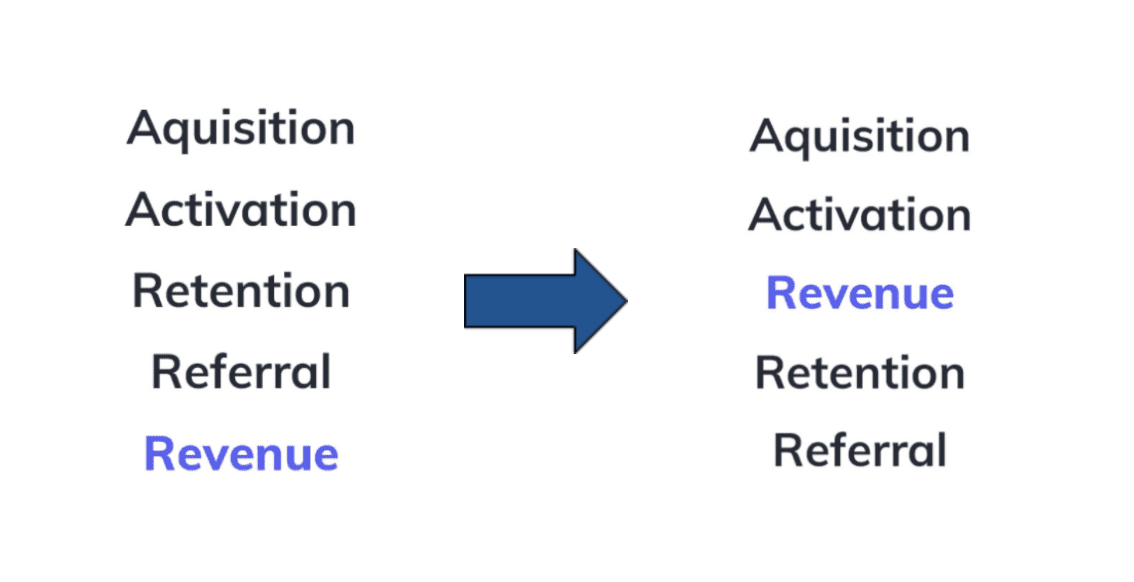
Credits: Productled.com; The order on the left is the actual order of McClure’s pirate metrics. On the right, we have adopted it to suit the free-to-paid revenue model of SaaS.
Acquisition
It refers to the number of people who sign up for your free trial or a freemium plan. Acquisition generally determines the size of your funnel. Its increase or decrease directly correlates to the MRR.
While thinking about the net new acquisition, it is also essential to consider the expansion MRR, which measures the revenue generated from existing customers through upsells, add-ons, cross-sells, etc. Profitwell recommends having at least 30% of your revenue coming from expansion MRR.
Activation
Activation happens when users discover their ‘aha’ moment with your product. It is expressed as a percentage of activated users out of the total acquired users. An increase in activations in a free-to-paid model will dictate the revenue from new users and recurring revenue from existing users. Activation would also have a significant impact on retention and referrals, pushing the MRR even higher.
To zero in on your product’s ‘aha’ moment, try to understand the Product-qualified Leads’ behavior (PQLs). They are the ones who have seen and understood the value your product can offer with minimal effort from your side.
Revenue
Revenue is simply the measure of the funnel size in currency. An increase in revenue would directly correlate with an increase in MRR. It is very similar to acquisition because both the pirate metrics are fixed and have a linear effect on the bottom line. Appcues says, “Acquisition sets the size of the funnel in terms of numbers of users, and revenue sets the funnel size in terms of dollars.”
Retention
Retention is the number of users who continue to pay for your product month over month. Companies usually set their retention goals at a higher percentage because it’s easier to make existing users stay rather than convincing new people to use your product. Retention and acquisition can either shrink or expand the funnel’s size, and their effect on MRR is the same.
Understanding your average revenue per user (ARPU), customer lifetime value (CLTV), and net churn can help you tweak your customer experience along with your product.
Referrals
Referrals are the percentage of current users who successfully bring in new users to your product. It is a direct byproduct of good UX and the happy customer formula whose problem is solved through your product. You can focus on NPS scores, which tell you how satisfied your customers are, to improve referrals. The viral coefficient is an equally efficient way to find your happy customers. It refers to every customer you acquire who brings in two other customers with them. Since it reduces the CAC, it is a vital metric to keep an eye on. Usually, products with a network effect, having two-sided marketplaces such as Airbnb or Facebook, benefit from this.
Virality and Network effect
While the network effect helps create a lasting competitive advantage, creating virality is a marketing tactic that helps gain more traction and visibility. Network effect and virality are often confused with each other due to their overlapping nature, but they are different. You can only achieve the network effect after a critical mass of customers is reached. Whereas a viral product is one whose growth rate increases with adoption, it grows faster as more users use it.
When the network effect is combined with virality, it can create a positive feedback loop that would fuel the flywheel model.
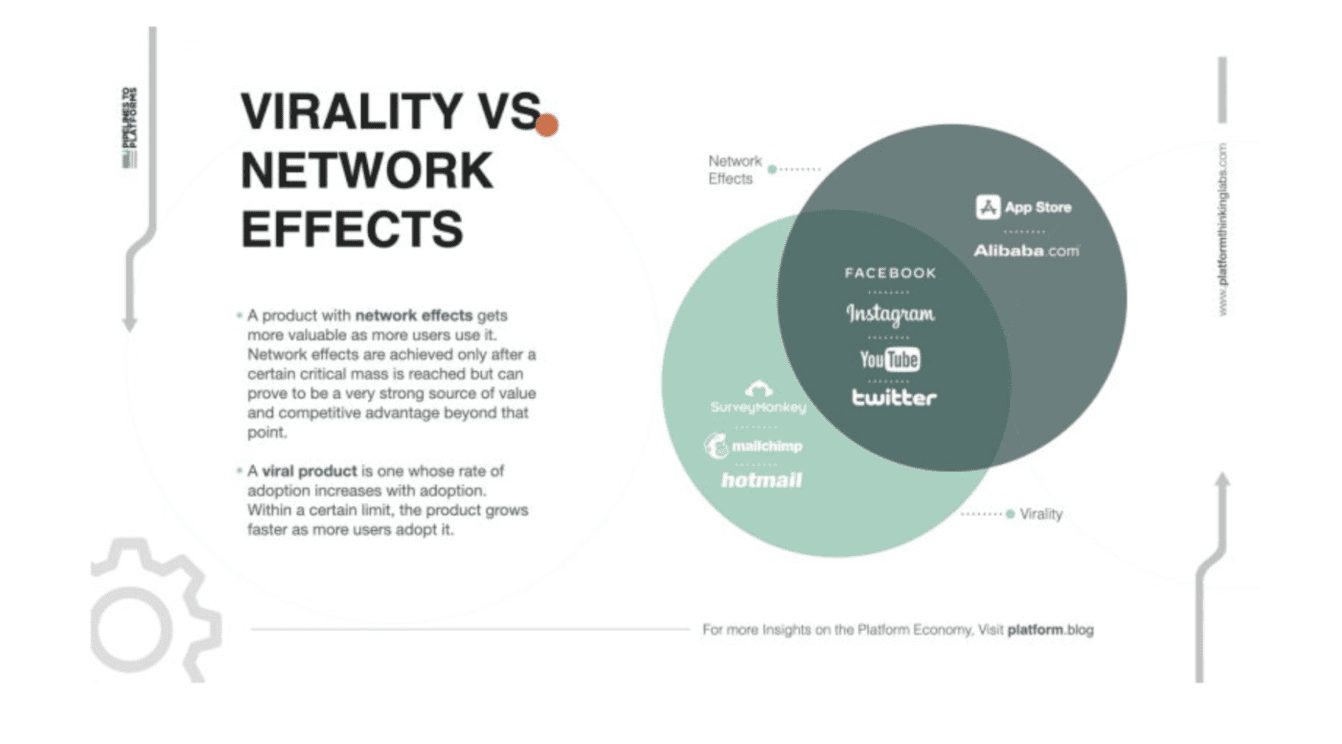
Credits: pipelines to platforms
Apart from these frameworks, you can use specific metrics to measure product-led growth, such as time to value (TTV), Average revenue per customer (ARPU), expansion revenue, etc., which can give you a closer look at product-led growth.
Check out Cargebee’s Revenue growth guide for self-serve SaaS to understand this better.
Chargebee helps self-serve businesses scale confidently by setting the subscription workflow on autopilot. It helps reduce friction that arises in your flywheel model. Switching to self serve or growing through a product-led model should help you grow your business with your customers’ support. Chargebee allows you to maintain your personalized touch with your customers and helps you reduce voluntary and involuntary churn.
Generally, I would suppose you to schedule a call with our experts. However, your interest in self-serve says otherwise. Check out how Chargebee can help you streamline your self-serve SaaS for yourself.





